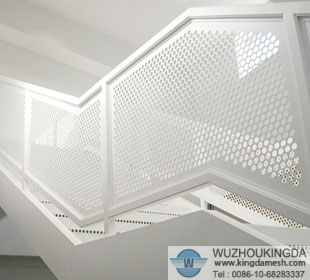The punched metal panels can be used as the materials of metal ceilings
Ceilings are an element that is often undervalued by the occupants of a building. However, they play an important role in their comfort. Meeting occupant demands for a modern office environment requires consideration to be given to acoustics and space flexibility.
Low maintenance costs and product durability are factors that also need to be addressed, while architects and clients will be looking for the optimum aesthetic finish. Suspended ceilings are traditionally installed to provide acoustic comfort and service integration.
The choice of tile provides the desired acoustic performance. Metal ceiling tiles are supplied with factory-formed apertures for luminaires and other services, reducing on-site waste and installation time. Engineered systems can also ensure that product quality is significantly better. Working closely with project teams and coordinating service options, prefabrication can lead to on-site cost savings.
There are a number of different design and performance options that need to be considered when specifying a ceiling, including:
Material typE: A range of different ceiling materials are available on the market, including mineral wool, gypsum and metal. In addition to meeting the requirements of LEED and Estidama, the long-term environmental benefits of metal meet the sustainability demands of modern projects. With a 25-year lifecycle and minimal ongoing maintenance, metal provides the durability that clients want.
It is specified on numerous construction projects for its performance and, unlike other materials, it has a closed lifecycle loop, as it can be recycled into new steel. With 40% recycled content, steel is the most recycled material globally.
Steel can be used for applications such as cladding, soffits and ceilings, especially in locations where humidity and proximity to the sea must be considered. Steel is being supplied to projects in the region because of its durable and versatile qualities, which offer a cost-effective and sustainable solution. It can withstand weathering and, applied with a powder paint coating, is guaranteed for 40 years.
Acoustic Performance (Figure 1): The versatility of metal provides unrivalled acoustic properties while maintaining a continuous aesthetic appearance. A number of different acoustic backing materials can be used with punched metal panels, providing acoustic attenuation of up to 49dB and acoustic absorption of 0.90.
To provide the ideal levels of occupant comfort, it is important to ensure the correct acoustic performance is specified and installed. On many projects this will include a mix of sound-absorbing tiles in open-plan spaces and sound attenuation tiles for modular offices.


